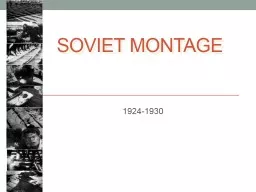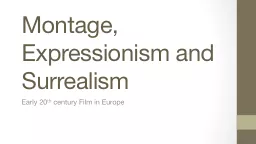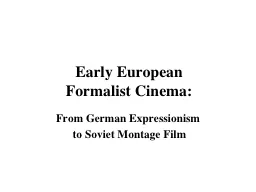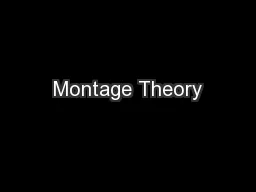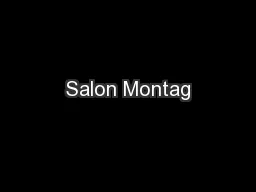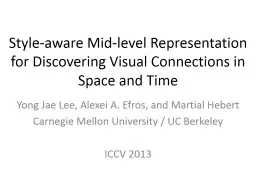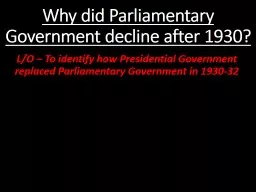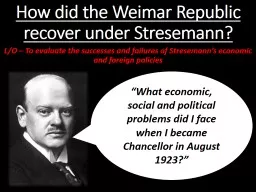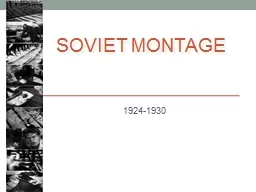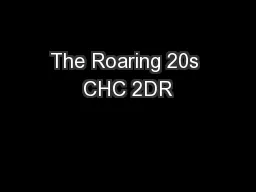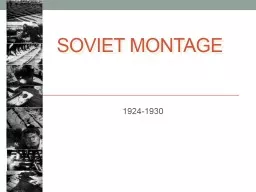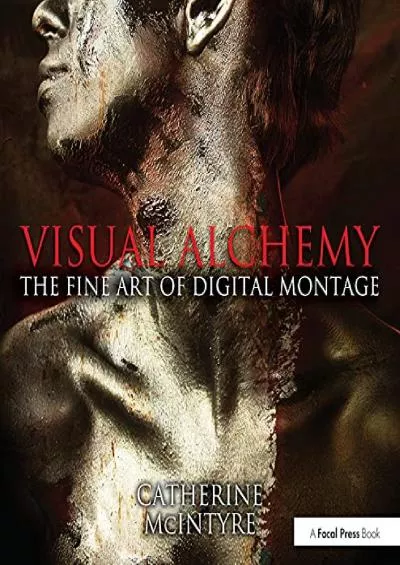PPT-Soviet Montage 1924-1930
Author : marina-yarberry | Published Date : 2018-03-13
Soviet Cinema in the 1920s Vibrant film culture after Russian Revolution Lenin cinema would be the most important art in the effort to reunite his nation
Presentation Embed Code
Download Presentation
Download Presentation The PPT/PDF document "Soviet Montage 1924-1930" is the property of its rightful owner. Permission is granted to download and print the materials on this website for personal, non-commercial use only, and to display it on your personal computer provided you do not modify the materials and that you retain all copyright notices contained in the materials. By downloading content from our website, you accept the terms of this agreement.
Soviet Montage 1924-1930: Transcript
Download Rules Of Document
"Soviet Montage 1924-1930"The content belongs to its owner. You may download and print it for personal use, without modification, and keep all copyright notices. By downloading, you agree to these terms.
Related Documents

